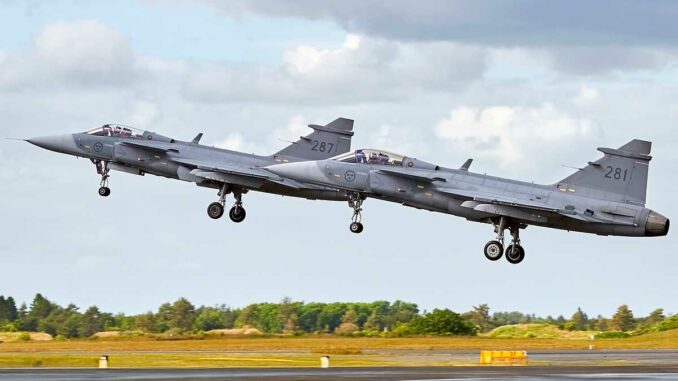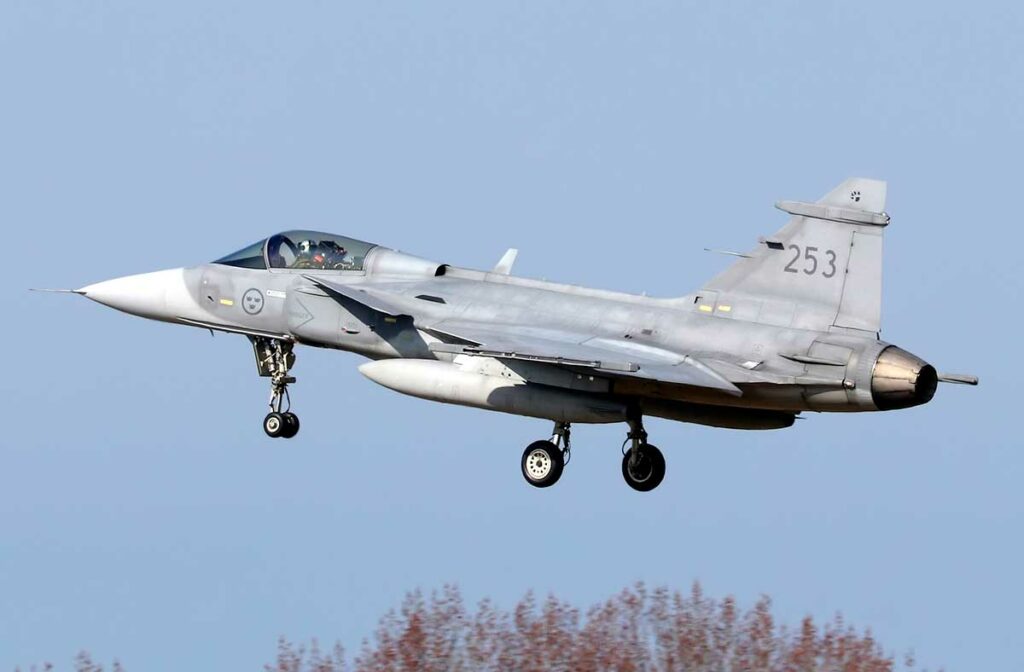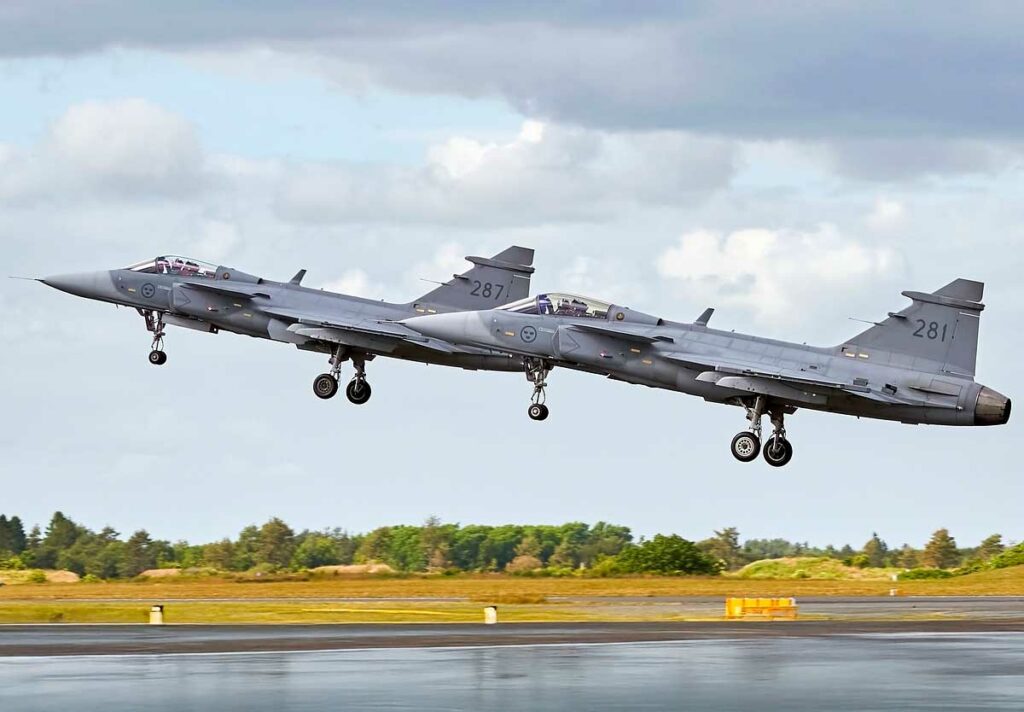
From the highway to in-flight updates, the JAS Gripen surprises with its unique design, software modularity, and ultra-light maintenance.
Designed to guarantee Sweden’s strategic autonomy during the Cold War, the JAS Gripen is now a renowned multi-role fighter aircraft known for its maneuverability, logistical flexibility, and low operating costs. But beyond its conventional technical performance, this aircraft hides a series of little-known features that are sometimes surprising for a modern fighter jet. The Gripen was designed to operate in degraded conditions, from ordinary runways, with a reduced ground crew and a unique software architecture. This article presents ten unusual technical facts about the Gripen, illustrating the Swedish philosophy of resilience, efficiency, and industrial independence in military equipment.
An aircraft capable of landing on a simple national road
The Gripen was designed to operate from standard 800-meter runways. This choice was based on a Swedish doctrine called “Bas 60,” which called for the use of highways or country roads to disperse aircraft in the event of a Soviet attack. The Gripen can therefore be operational from any prepared section of road, without heavy infrastructure or a sheltered runway.
This capability is based on its reinforced landing gear, very short taxiing distance, and simple braking system. The time required to get a Gripen back in the air after landing is less than 20 minutes, including refueling. This gives the aircraft a level of tactical mobility that is rare in the modern fighter category.

Maintenance can be carried out by five technicians in 10 minutes
The JAS Gripen is designed to be maintained by a five-person ground crew with light tools. A full refueling, ammunition and missile reload can be carried out in less than 10 minutes in the field.
This concept allows the aircraft to be kept on high alert, even from forward bases or austere deployments. Saab has designed every panel, access point and interface with ease of access and standardization in mind. No specialized tools are required for first-level maintenance operations.
An American engine in a Swedish aircraft
Although Swedish in origin, the Gripen is powered by a General Electric F404 (Gripen A/B/C/D) or F414 (Gripen E/F) engine, the same as the F/A-18 Hornet. These engines produce up to 98 kilonewtons of thrust with afterburner.
Sweden chose an American engine for its reliability, compactness, and above all to reduce development costs. However, Saab negotiated extensive local maintenance and manufacturing autonomy to ensure operational independence.
An easy-to-fly fighter jet
Tests carried out in Sweden have shown that a civilian pilot trained on a simulator can fly the JAS Gripen safely after 12 days of theoretical and practical training. The cockpit, designed for reduced cognitive load, displays information on a wide-angle display (WAD) with voice and touch controls.
This quick familiarization allows for rapid training of operational squadrons, an advantage for buyer countries with limited time or resources for advanced training.
Stable flight even at very low speeds
The Gripen is capable of maintaining stable flight at less than 250 km/h at 9,000 meters altitude. This capability is based on its digital flight controls and delta-canard airframe, which provides controlled maneuverability even at low lift.
This extremely slow flight profile is useful for observation operations, drone tracking, or approaches with reduced visibility. It also enhances the aircraft’s survivability in low-speed dogfights.
Unique interoperability between NATO and non-NATO weapons
Unlike most Western fighters, the JAS Gripen can be configured to carry AMRAAM and Meteor (NATO) missiles as well as Soviet-designed R-27 and R-73 missiles.
This allows countries still using Russian stocks to gradually switch to NATO without changing their entire logistics. This flexibility increases export competitiveness.
Highly advanced passive electronic warfare
The Gripen incorporates an MFS-EW electronic warfare system capable of locating enemy radars without ever transmitting. It uses antennas dispersed around the airframe and can provide passive mapping of the electromagnetic field.
Combined with a suite of decoys, jammers and IR sensors, this allows the Gripen to operate in high-emission environments without giving itself away, in partial stealth mode.

A airframe designed for 8,000 flight hours
The Gripen airframe is designed to withstand 8,000 flight hours without major overhaul. At 200 flight hours per year, this guarantees a service life of 40 years per aircraft.
The cost per flight hour of the Gripen C/D is estimated at between $5,000 and $6,000, half that of a Rafale or an F-16 Block 70. This drastically reduces the operating budget for a national fleet.
A software architecture that can be reconfigured in flight
The Gripen uses a modular computer system (MIL-STD-1760 and ADA/C++) that allows software modules to be installed, updated or restarted without grounding the aircraft.
For example, radar updates or tactical priority adjustments can be applied on the fly via a redundant onboard computer. This allows mission adaptation without returning to base.
Operational capability without a hangar
The JAS Gripen can operate without a hangar, fixed base or hard runway. It is capable of taking off from a section of forest road, with a mobile refueling system.
This philosophy is part of a national resilience approach, enabling a country to continue its air operations even if its main infrastructure is destroyed.
War Wings Daily is an independant magazine.